#Waterproof Textiles
Text
Waterproof Breathable Textiles: An In-Depth Analysis of Market Trends, Strategies, and Projections
The global waterproof breathable textiles market size is expected to reach USD 2,859.3 million by 2030, expanding at a revenue-based CAGR of 5.7%, according to a new report by Grand View Research, Inc. Increasing demand for comfortable and high-performance apparel that provides protection from environmental factors such as wind and rain is expected to propel market growth over the forecast period.

Waterproof Breathable Textiles Market Report Highlights
In 2022, the polyurethane segment accounted for a revenue of USD 717.6 million of the market in terms of volume, on account of its durability, versatility, and low-cost properties, which makes it suitable for manufacturing cost-effective waterproof breathable textiles
The general clothing and accessories segment is projected to witness a revenue-based CAGR of 5.5% over the forecast period owing to rising demand for the clothing products with lightweight, high strength, waterproof, and insulating properties
The membrane segment accounted for revenue of USD 1,363.9 million in 2022, on account of its superior vapor permeability and waterproofing properties thereby making it suitable for application in manufacturing of lightweight waterproof apparels
Burgeoning consumption for the sports apparels coupled with anticipated rise in demand for winterwear and protective footwear are expected to propel the growth of the market in U.S. at a CAGR of 6.6% over the forecast period
Considerable improvements in the production technologies such as production of extremely thin membranes, membrane incorporation method, and coating techniques are having a significant impact on waterproof breathable textiles market growth
Leading manufacturers are collaborating with specialists in the fields of biochemistry, chemistry, material research, and graphic design to improve the properties and functionalities of the products.
For More Details or Sample Copy please visit link @: Waterproof Breathable Textiles Market Report
Waterproof breathable textiles are lightweight, durable, and easy to dry and care, which makes them ideal for outdoor activities. Increasing participation in activities such as camping, fishing, hiking, hunting, kayaking, and boating is expected to propel the demand for protective clothing and accessories such as raincoats, windbreakers, tents, footwear, thereby impacting the industry positively.
Technological advancements in the textile industry to produce apparel using biomimetic and smart breathable fabrics are expected to contribute to market growth. Additionally, the technological advancements in the areas of cost-effective manufacturing of waterproof breathable textiles are expected to boost the demand for these products.
#Waterproof Breathable Textiles#Waterproof Textiles#Breathable Fabrics#Outdoor Apparel#Technical Textiles#Fashion Innovation#Sustainable Fashion#Textile Tech#Climate Resilient Clothing#Eco-Friendly Textiles#Performance Apparel#FashionTech#Weatherproof Wearables#Textile Innovation#Outdoor Gear#Waterproof Fashion#Eco-Fashion#Fabric Technology#Apparel Innovation#Green Textiles#Fashion Sustainability
0 notes
Text
Waterproof textiles
The waterproof textiles and stain-resistant material of the textiles, by creating an invisible cover, prevents the absorption of liquids and creates a suitable opportunity to remove the liquids spilled on the textiles. Another application of nanotechnology is the completion of fabrics with nanostructures to create fire retardant properties in fabrics. Nanoscale coatings such as fire retardant coatings, which are also used for fireproof and refractory fabrics, increase the safety and added value of textiles. Clothes and floors are one of the most important factors in the spread of fire in homes and public places, commercial and residential buildings. The occurrence of fires in these places causes the formation of smoke and toxic gases, destructive acid gases and, of course, will suffocate the residents. One possible way to reduce the damage caused by fires in homes and public places is to use flame retardants such as Nomex. These materials physically bond fibers to textiles, preventing the rapid spread of fire in places, firefighters' clothing, smelters, and so on. The global need for home, military, hospital, health, sports and other textiles that do not require maintenance is increasing day by day. One of the properties that meet this need is the creation of water and stain removal properties in textiles with a long-lasting effect. By using nanotechnology in the production and completion of stain-resistant and waterproof fabrics, liquid droplets can not penetrate into liquid-resistant fabrics. This effect is similar to that found on the skin of beetles, insect wings and butterflies, the leaves and flowers of irises or lilies, and that are covered with a one-nanometer-thick layer of wax. Water or rain droplets on these flowers and leaves form small, round grains that slide on the uneven nanotechnology surface of the plant leaves and flowers, removing dirt, dust, and those suspended in water droplets. . Textiles processed with some nanomaterials are able to absorb or move liquids, thus removing any water, stains and contaminants such as stains, coffee, grass, oil, etc. from the fabric, while also interrupting breathing. Do not create fabric plasticity. The basis of stainless and waterproof clothing is a change in the surface tension of the fabric.
0 notes
Text
Step into Dryness: The Ultimate Guide to Waterproofing Shoes

Wet feet can put a damper on any outdoor adventure, whether you’re hiking, camping, or simply navigating a rainy day. But with the right waterproofing techniques and products, you can keep your feet dry and comfortable no matter what the weather has in store. In this comprehensive guide, we’ll cover everything you need to know about waterproofing shoes and provide helpful tips to ensure you never have to suffer from soggy feet again.
The Importance of Waterproof Shoes
Waterproof shoes play a crucial role in keeping your feet dry, protected, and comfortable during outdoor activities. Not only do they prevent the unpleasant sensation of wet feet, but they can also help to prevent blisters, cold feet, and other related issues. Moreover, waterproof shoes can extend the life of your footwear by protecting them from the damaging effects of water and moisture.
Types of Waterproofing for Shoes
There are several methods available for waterproofing shoes, each with its own unique benefits and drawbacks. In this section, we’ll explore the most common types of waterproofing and help you determine which method is best for your needs.

Wax and Waterproofing Sprays
Wax and waterproofing sprays are simple and convenient options for waterproofing shoes. They are easily accessible at most outdoor gear stores and can be quickly applied to the surface of your shoes. Simply spray or rub the waterproofing product onto the shoes, allow it to dry, and enjoy the protection it provides. However, it’s important to note that some sprays and waxes may darken the color of your shoes and affect the breathability of the material. With GoGoNano waterproofing sprays you can be sure that material color or breathability won’t change.
Sealed and Waterproof Shoes
For those who are in the market for new shoes, purchasing a pair that is already sealed and waterproof is another option. Shoes designed for outdoor activities often feature waterproof materials, such as Gore-Tex, that provide excellent protection from water. This is a great choice for those who want the peace of mind that comes with knowing their feet will be dry and comfortable, without having to worry about reapplying a waterproofing product. Be sure that even the Gore-Tex’s waterproofing properties will fade away over time. Applying a waterproofing solution will enhance the material and water repellent properties will be active again.
Waterproof Socks
Another option for waterproofing shoes is waterproof socks. These are designed to be worn inside your shoes and provide a barrier between your feet and the water. They come in a variety of styles and sizes and are made from waterproof materials like Gore-Tex. This is a good choice for those who want to keep their current shoes and add an extra layer of protection. However, it’s important to make sure the socks fit well and don’t bunch or slide around inside the shoes, as this can cause discomfort.
youtube
DIY Waterproofing at Home
If you prefer not to buy a new pair of shoes or waterproofing socks, you can easily waterproof your current shoes at home with a few simple steps.
Clean and Dry the Shoes
The first step in waterproofing your shoes is to thoroughly clean and dry them. Remove any dirt, debris, or grime from the surface of the shoes and make sure they are completely dry before applying the waterproofing product.
Apply Waterproofing Spray or Wax
Next, apply a waterproofing spray or wax to the surface of the shoes. It’s important to follow the instructions on the product and apply it evenly, covering all areas of the shoes. Make sure to apply enough product to create a strong barrier against water. With GoGoNano waterproofing solutions you do not have to worry about material loosing its breathability or discoloring.
Allow the Shoes to Dry Completely
Once you’ve applied the waterproofing product, allow the shoes to dry completely. Our solutions will take 1 hour to dry out but maximum properties will be active after drying overnight. Depending on the product used, the drying time may be different. It’s important to let the shoes dry completely to ensure the waterproofing effect is strong and long-lasting.
Repeat as Needed
Depending on the frequency of use and exposure to water, you may need to reapply the waterproofing product every few months or so. It’s a good idea to regularly check the shoes for any signs of wear and reapply the product as needed to keep them in good condition.
FAQ
To wrap up, we’ve included answers to some frequently asked questions about waterproofing shoes.
Can I waterproof any type of shoes?
Yes, with GoGoNano you can waterproof any type of shoes, as long as they are made from a material that can be treated with a waterproofing product. This includes shoes made from materials like leather, fabric, and suede.
Is waterproofing a one-time process?
No, waterproofing is not a one-time process. The effectiveness of the waterproofing will depend on the frequency of use and exposure to water, and you may need to reapply the product every few months to keep the shoes in good condition.
Can waterproofing affect the breathability of my shoes?
Yes, depending on the type of waterproofing product you use, it can affect the breathability of your shoes. By choosing GoGoNano waterproofing products you can be sure that material color or breathability will not change in any way. Our products are all tested to fit with all the materials or shoe types.
In Conclusion
In conclusion, waterproofing shoes is a simple and effective way to keep your feet dry and comfortable no matter what the weather has in store. With the right waterproofing techniques and products, you can enjoy all your outdoor activities with confidence, knowing that your feet are protected from the elements. So, step into dryness and never suffer from soggy feet again!
#nanotechnology#green chemistry#sustainability#ecofriendly#waterproofing#stainproofing#water repellent#shoe protector#textile protector#leather protector#fashion protector#nano coating#nano tech#cleaning products#cleaning tips#cleaning guide#Youtube
1 note
·
View note
Text
Waterproof Breathable Textiles Market Outlook On The Basis Of Raw Material, Fabric, Application, Region And Forecast From 2023 to 2030: Grand View Research Inc.
San Francisco, 14 June 2023: The Report Waterproof Breathable Textiles Market Size, Share & Trends Analysis Report By Raw Material (ePTFE, Polyurethane), By Fabric, By Application, By Region, And Segment Forecasts, 2023 – 2030
The global waterproof breathable textiles market size is expected to reach USD 2,859.3 million by 2030, expanding at a revenue-based CAGR of 5.7%, according to a new…

View On WordPress
#Waterproof Breathable Textiles Industry#Waterproof Breathable Textiles Market#Waterproof Breathable Textiles Market 2023#Waterproof Breathable Textiles Market 2030#Waterproof Breathable Textiles Market Revenue#Waterproof Breathable Textiles Market Share#Waterproof Breathable Textiles Market Size
0 notes
Text
Waterproof Textile Market - Forecast (2023 - 2028)
Waterproof Textile Market is forecast to reach $1.9 billion by 2026, after growing at a CAGR of 6.2% during 2021-2026 due to growing adoption in the sports and fashion apparel manufacturing industry owing to its lightweight and flexibility. Waterproof textiles are produced from materials such as polyester, polyether, polyurethane, polytetrafluoroethylene, and others which are cost-effective and lightweight. Thus, these polymers make them ideal for footwear, gloves, waterproof garments, outdoor floors, and other applications. Waterproof textile offers water vapor permeability, high-density, optimum heat, and moisture regulation which makes them suitable for the fashion apparel industry. Hence, due to such properties, the consumption of waterproof textile is growing from the fabric industry which is estimated to grow the market size during the forecast period.
Request Sample : https://tinyurl.com/2p9x3es5
#Waterproof Textile Market price#Waterproof Textile Market size#Waterproof Textile Market share#Waterproof Textile Market forecast
0 notes
Photo

TARRAGO Nano i pełen spokój 👞👞☔️☔️☔️ @nanoprotektor @patinepl @patineshoes #multirenowacja #patine #tarrago #leather #suede #waterproof #winter #membran #textil #shoes #boots #buty #patinepl #patineshoes #multirenowacjapl #buty #zamsz #obuwie #zima #obuwie #shoecare #waterproof #szewc #szewcy #szewstwo #butymęskie #butymeskie #shoeshopping https://www.instagram.com/p/CoQL7MZLtEV/?igshid=NGJjMDIxMWI=
#multirenowacja#patine#tarrago#leather#suede#waterproof#winter#membran#textil#shoes#boots#buty#patinepl#patineshoes#multirenowacjapl#zamsz#obuwie#zima#shoecare#szewc#szewcy#szewstwo#butymęskie#butymeskie#shoeshopping
0 notes
Text
Stopppppp making ‘plant’ leathers seem eco friendly
#they’re never more than like 40% plant materiel#they’re stuck together with plastic then waterproofed by being covered in plastic#they take a lot of chemical processing to become usable as a textile
1 note
·
View note
Text
Waterproof Breathable Textiles Market Size Worth $2.7 Billion By 2027
Waterproof Breathable Textiles Market Size Worth $2.7 Billion By 2027
The global waterproof breathable textiles market size is expected to reach USD 2.7 billion by 2027, expanding at a revenue-based CAGR of 5.7%, according to a new report by Grand View Research, Inc. Increasing demand for comfortable and high-performance apparel that provides protection from environmental factors such as wind and rain is expected to propel market growth over the forecast…
View On WordPress
0 notes
Photo
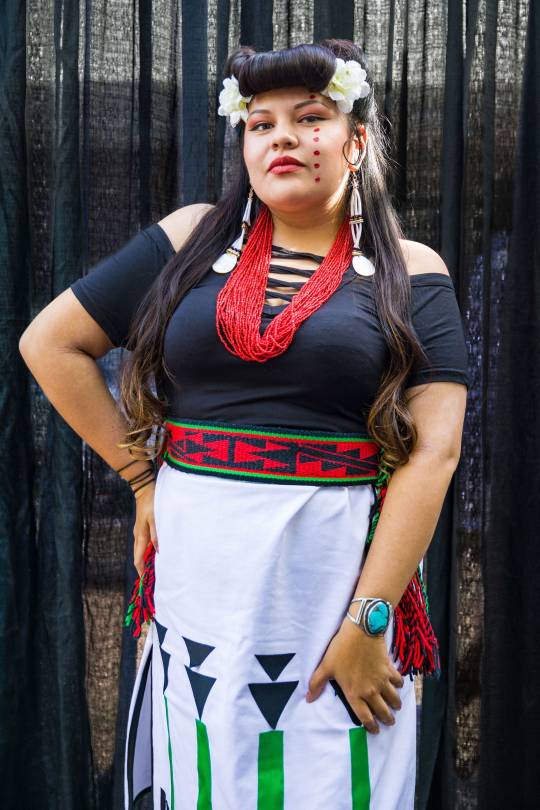
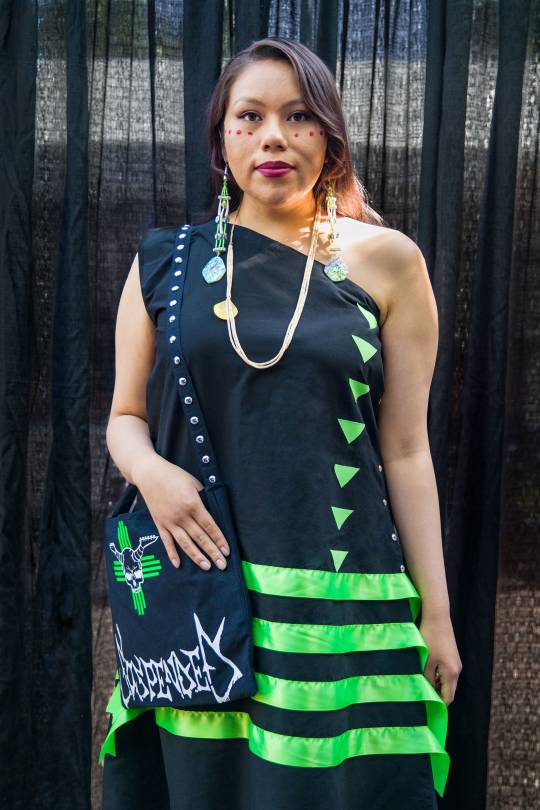

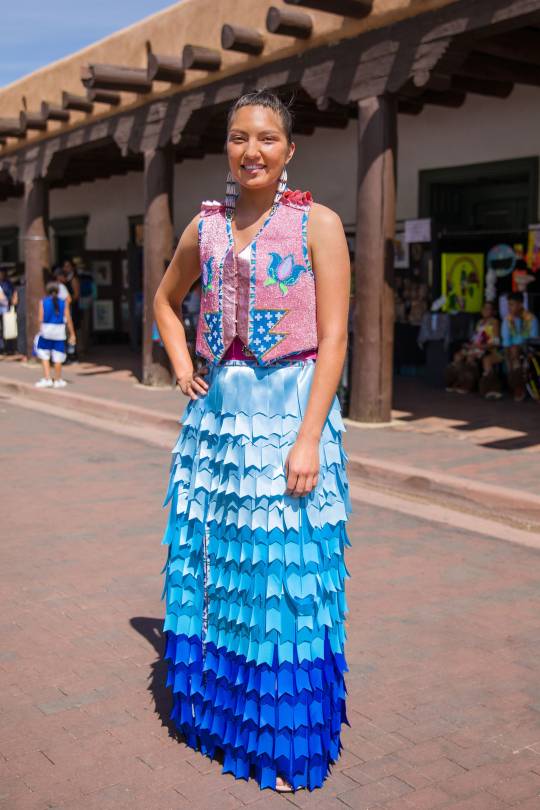

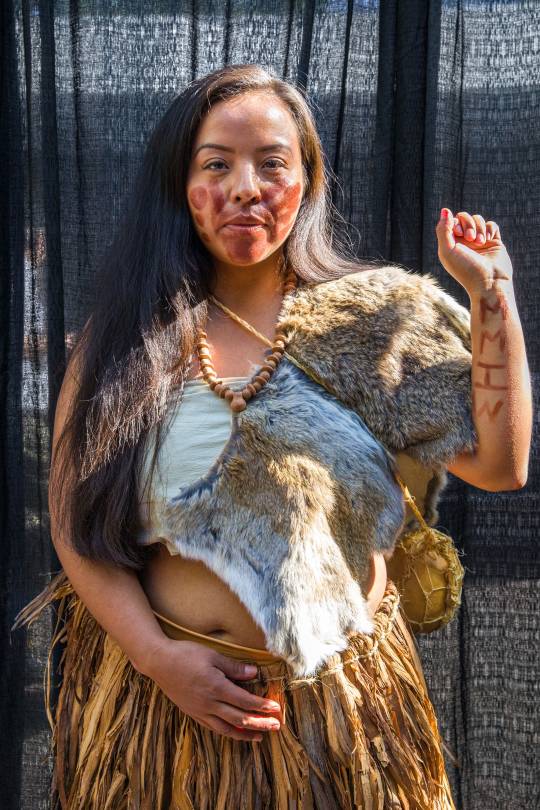

Street style at the Santa Fe Indian Market, photographed by Shayla Blatchford
Check out the source for article, more photos, and names of designers!
Another Vogue article on artists and designers at the Santa Fe Indian Market.
More images below the cut!
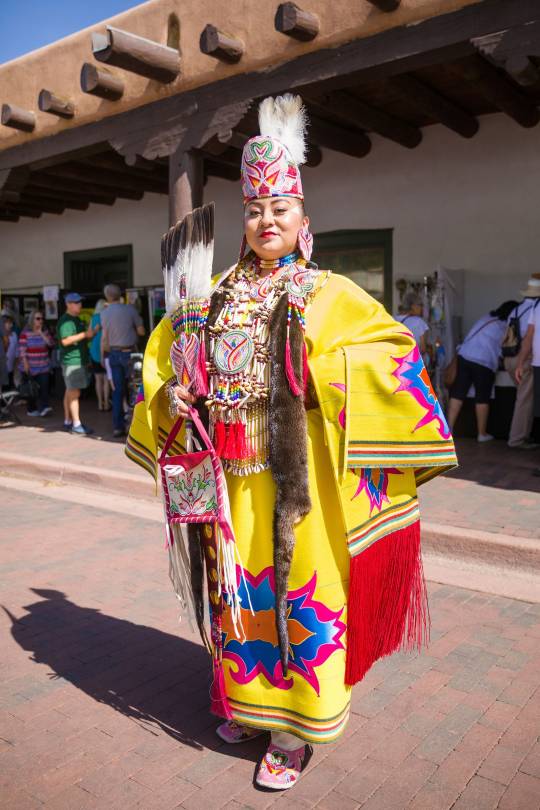
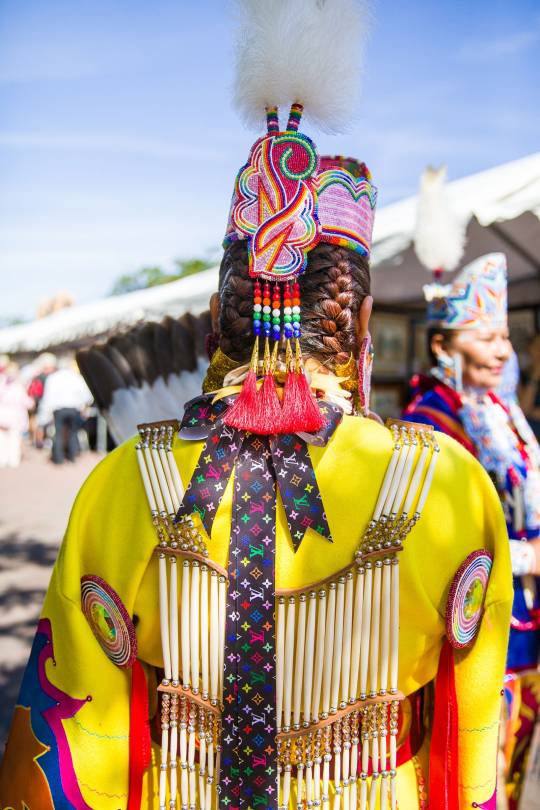
^ Natasha Ashley Brokeshoulder
“Natasha Ashley Brokeshoulder, for instance, who is Diné, wore a wing dress created by her father-in-law, while her breastplate was assembled by her husband. “I got the right to wear the regalia that I have from my husband, who is Absentee Shawnee from the Southern Plains,” she said, adding that it is respectful to gain permission from other tribes to wear their specific styles of garment.”
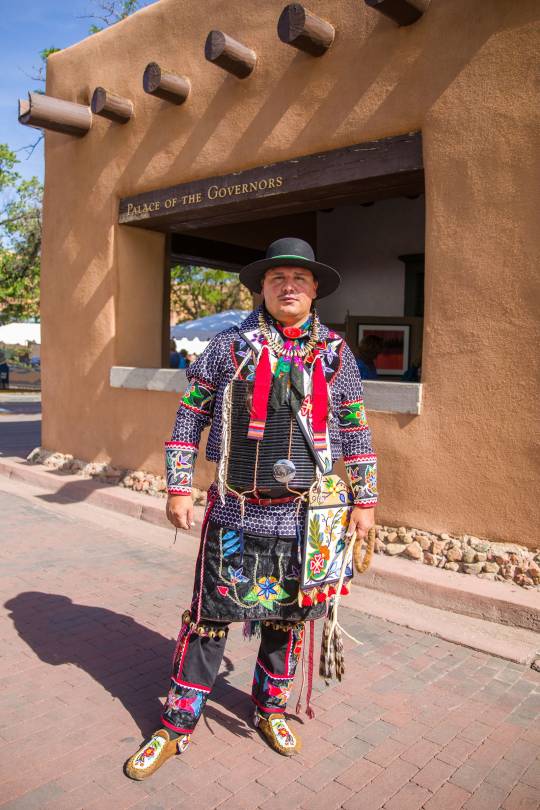
^ James Budday
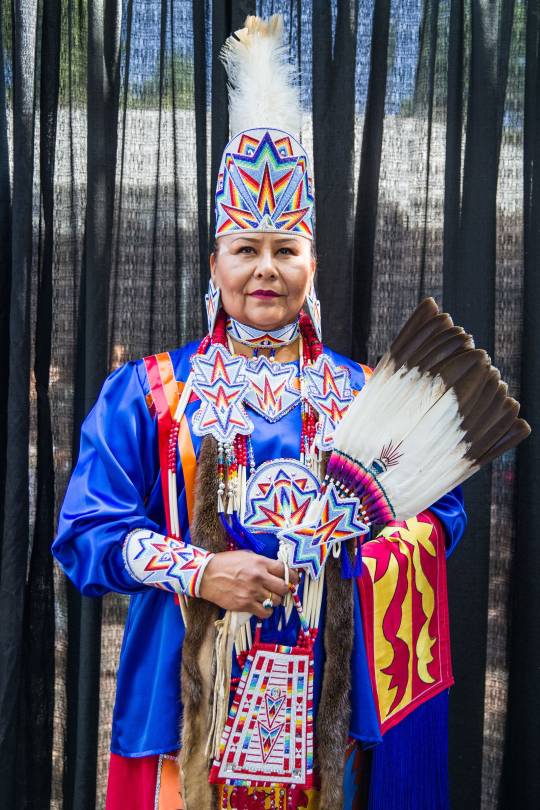
^ Sharon Brokeshoulder
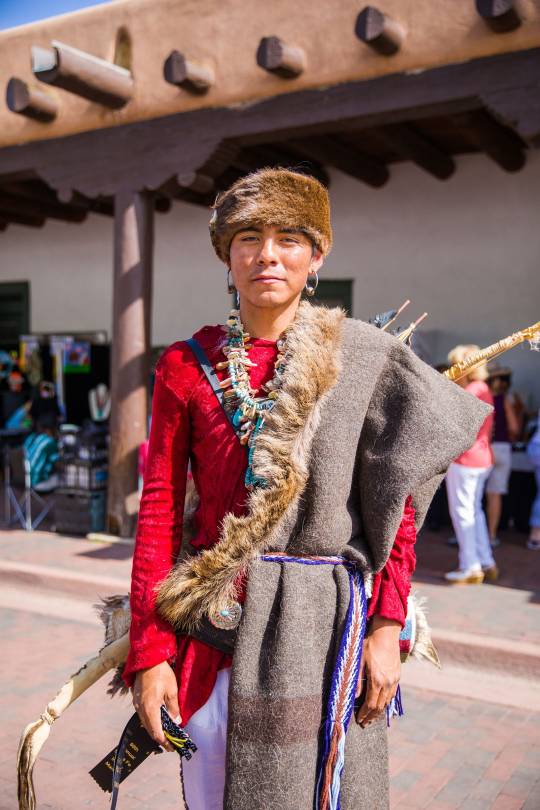
^ Zeke Arjeanas
‘Others chose a more historical approach to fashion. Zeke Arjeanas, who is also Diné and won first place in the men’s category, referenced the Long Walk of the Navajo (the 1860s deportation of this indigenous tribe from their native land) for his traditional Clothing Contest outfit. “What I’m wearing is a blanket—not a Navajo blanket, but an army-issued blanket that was issued to the Navajos [at that time],” he said. “With the army-issued blanket, it’s a lot thicker and scratchier versus a Navajo textile blanket, which was more fine, lightweight, and waterproof.”’
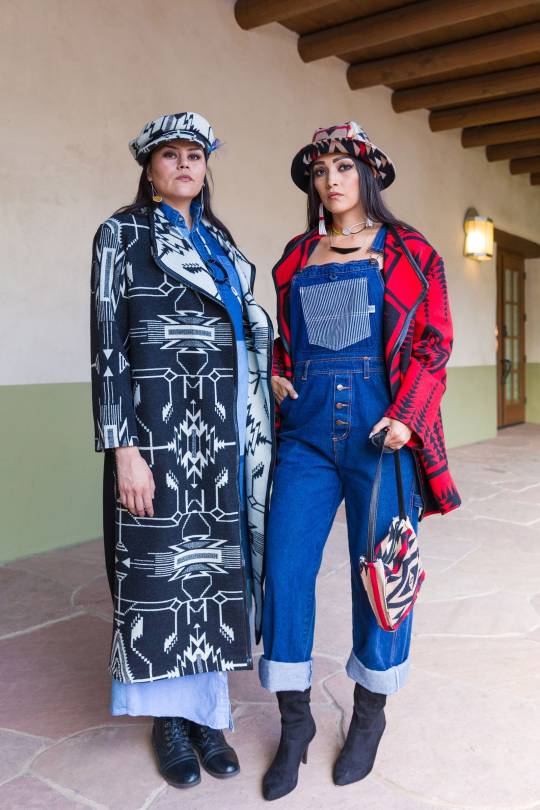
^ Two looks from Korina Emmerich with jewelry by Tania Larsson
“...the new collection of the New York–based designer Korina Emmerich (Puyallup), whose asymmetrical vests and graphic wool coats offered a modern interpretation of her tribe’s punchy aesthetic. She also used Gwich’in-inspired jewelry by Larsson, mentioned above, in the show. “What I admire in Korina’s work is her modern, impeccable cuts,” Larsson said. “There is a traditional element that is inherent within my work because of the materials that I use and through the process that they are acquired, such as trade and through community exchanges.””

^ Phillip Bread in a Matthew Charley squash blossom necklace

^ Marcus Winchester
#fashion#native american#native american fashion#native american art#jewelry#headdress#men's fashion#hairstyles#shawnee#dine
5K notes
·
View notes
Text
Waterproof Breathable Textiles Enhance Performance and Style
The global waterproof breathable textiles market size is expected to reach USD 2,859.3 million by 2030. Increasing demand for comfortable and high-performance apparel that provides protection from environmental factors such as wind and rain is expected to propel market growth over the forecast period.
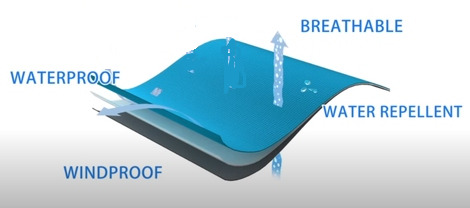
Gain deeper insights on the market and receive your free copy with TOC now @: Waterproof Breathable Textiles Market Report
Waterproof breathable textiles are lightweight, durable, and easy to dry and care, which makes them ideal for outdoor activities. Increasing participation in activities such as camping, fishing, hiking, hunting, kayaking, and boating is expected to propel the demand for protective clothing and accessories such as raincoats, windbreakers, tents, footwear, thereby impacting the industry positively.
Technological advancements in the textile industry to produce apparel using biomimetic and smart breathable fabrics are expected to contribute to market growth. Additionally, the technological advancements in the areas of cost-effective manufacturing of waterproof breathable textiles are expected to boost the demand for these products.
Major industry participants are making considerable investments in the development of eco-friendly products to cater to the rising preference for sustainable apparel. Furthermore, rapid changes in consumer preferences in terms of fashion trends are nudging the manufacturers to strengthen their merchandising capabilities.
#Waterproof Textiles#Breathable Fabrics#Weatherproof Apparel#Outdoor Performance Wear#Innovative Textiles#Smart Fabrics#FashionTech#Advanced Apparel#Climate Adaptive Clothing#Functional Fashion#Weather Resistant Materials#Performance Textiles#Active Lifestyle Wear#Technical Textiles#Outdoor Adventure Gear#Athleisure Wear#Sportswear Technology#EcoFriendly Textiles#Comfortable Protection
0 notes
Text
A Young Person's Guide to 18th-Century Western Fashion
unabridged version at blogspot
General info
Cox, Abby. "I Wore 18th-Century Clothing *Every Day for 5 YEARS & This Is What I Learned (Corsets Aren't Bad!)." YouTube. May 10, 2020.
Cullen, Oriole. “Eighteenth-Century European Dress.” In Heilbrunn Timeline of Art History. New York: The Metropolitan Museum of Art, 2004.
Glasscock, Jessica. "Eighteenth-Century Silhouette and Support." In Heilbrunn Timeline of Art History. New York: The Metropolitan Museum of Art, 2004.
Accessories
Banner, Bernadette. "Women's Pockets Weren't Always a Complete Disgrace | A Brief History: England, 15th c - 21st c." YouTube. April 10, 2021.
Colonial Williamsburg. "#TradesTuesday: Men's Accessories." YouTube. June 13, 2021.
Murden, Sarah. "The Georgian era fashion for straw hats." All Things Georgian. December 6, 2018.
Cosmetics & hygiene
Cox, Abby. "I Followed an 18th-Century Moisturizer & Sunscreen Recipe & it kinda worked??." YouTube. February 21, 2021.
Cox, Abby. "We tried making *5* different 250 year old rouge (blush) recipes || [real] regencycore makeup." YouTube. August 29, 2021.
JYF Museums. "Hygiene in the 18th Century | From the Farm to the Army." YouTube. August 21, 2021.
Décor
Heckscher, Morrison H. “American Rococo.” In Heilbrunn Timeline of Art History. New York: The Metropolitan Museum of Art, 2003.
Munger, Jeffrey. “French Porcelain in the Eighteenth Century.” In Heilbrunn Timeline of Art History. New York: The Metropolitan Museum of Art, 2003.
Formal wear
SnappyDragon. "This dressing gown changed fashion forever : the feminist history of going out in loungewear." YouTube. April 15, 2022.
Stowell, Lauren. "The Many Types of 18th Century Gowns." American Duchess. March 15, 2013.
Zebrowska, Karolina. "Cottagecore Style Is Much Older Than You Think." YouTube. June 30, 2021.
Hair care
Cox, Abby. "I made 250-year-old Hair Products Using Original Recipes (and animal fat...)." YouTube. November 7, 2021.
Cox, Abby. "I tried a 300-year-old hair care routine for a year & this is what I learned (it's awesome!)." YouTube. January 23, 2022.
Cox, Abby. "What's the Deal with 18th Century Wigs? (and why Bridgerton really messed this up)." YouTube. June 1, 2023.
Laundry
Cox, Abby. "Making 300 Year Old SLIME for Laundry Day." YouTube. June 15, 2023.
Townsends. "Historical Laundry Part 2: No Washing Machine, No Dryer, Hit It With A Stick?" YouTube. June 3, 2019.
Outer- & working-wear
JYF Museum. "Getting Dressed | Clothing for an 18th Century Middling Woman." YouTube. March 18, 2021.
Major, Joanne. "The practicalities of wearing riding habits, and riding ‘en cavalier’." All Things Georgian. March 12, 2019.
Rudolph, Nicole. "What did Pirates ACTUALLY Wear? Fashion at Sea in the 18th c & Our Flag Means Death Costumes." YouTube. May 8, 2022.
Shoes
Chin, Cynthia E. "Martha Washington's Shoes." George Washington's Mount Vernon. No date.
Murden, Sarah. "18th-century shoes." All Things Georgian. December 15, 2015.
Rudolph, Nicole. "Real 18th century Shoes? Historical Shoemaker Examines an Antique." YouTube. December 13, 2020.
Textiles
Cox, Abby. "18th Century Printed Cotton Do's & Don't's." American Duchess. December 23, 2019.
Stowell, Lauren. "Fabrics for the 18th Century and Beyond." American Duchess. June 14, 2021.
Townsends. "Oil Cloth - Waterproof Coverings for Your Campsite." YouTube. July 30, 2018.
Undergarments
Major, Joanne. "Quilted Petticoats: worn by all women and useful in more ways than one." All Things Georgian. November 20, 2018.
Rudolph, Nicole. "Making 18th century Stays for the Ideal Body Shape : Historical Undergarments." YouTube. August 12, 2023.
SnappyDragon. "RUMP ROAST : Ranking historical fashion's wildest fake butt pads." YouTube. October 27, 2023.
Townsends. "Sewing Histories' Most Popular Garment - The Fabric Of History - Townsends." YouTube. September 3, 2022.
#reference#history#abby cox#bernadette banner#fashion#hair care#hairstyle#youtube#video#nicole rudolph#townsends#us history#american history#colonial williamsburg#jamestown#georgian era#rococo#1700s#american duchess#mount vernon#bridgerton#the metropolitan museum of art#our flag means death
141 notes
·
View notes
Text
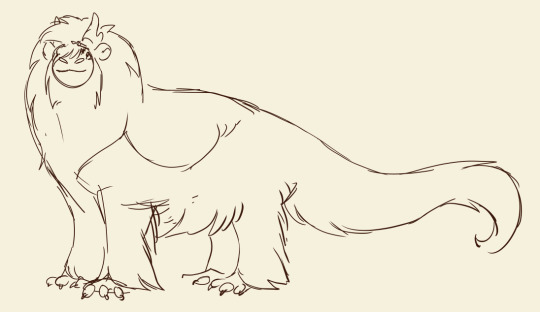
A Tundra dragon's wintercoat is thick enough to completely cover the webbed part of their wings when not in flight, protecting the exposed skin from frost. In the coldest parts of the Southern Icefield, all travel during winter is done on foot not only to avoid exposing the wings to frigid temperatures, but also because the coat can grow heavy enough to make liftoff difficult or impossible.
In most cases, the coat also grows over the feet, but the individual in this picture has trimmed it back to expose their claws. This may be done for aesthetic reasons or for the physical dexterity granted by unfurred feet. In either case, they'll need some sort of protection before heading outside.
Most Tundra dragons don't use specialized winter gear - their coats are more insulating than almost any other material you could get ahold of. In fact, cold-weather clothing for Tundras with patchy, shaved, or otherwise inadequate coats is often made from shed fur from the previous season! Blankets and other textiles made from Tundra fur are often passed down as heirlooms or given to leaving clan members (if they're leaving on good terms), as fur can retain the scent of the dragon who shed it for many years.
Non-Tundra clan members will wear garments made from shed fur as well, and they can be valuable exports if the clan can find a market. There are very few places outside the Icefield that get cold enough to require that kind of garment, so demand is naturally limited. The most common customers are high-altitude fliers, abyssal divers (the fur is not waterproof, but doesn't lose its insulating properties when wet), and the occasional collector or museum.
#flight rising#'but why would they shave their fur if they might freeze to death'#1. for the looks. and if theyre in a clan with tundras theyve got tundrafur clothing so they actually wont freeze to death duh#2. for surgery#3. get bubblegum in it
82 notes
·
View notes
Note
Hi! Your blog is awesome. I don't know if I'm allowed to ask non-atla questions, so I hope this is okay. I'm working on a non-avatar ttrpg campaign that takes place both in a (fictional/fantasy) northern tundra region AND during a magical endless winter. The people in it aren't based on any specific culture but, given that they're successfully living in similar environments & have for countless generations, I want to draw as much inspiration & knowledge from real-life circumpolar cultures & native science as much as possible. Do you have any advice or even just fun, underappreciated ideas for winter tundra survival, things someone who grew up in a desert like me wouldn't think of on my own? If you need/want more direction: I'm particularly looking for clothing, shelters, resource gathering-practices for non-food (esp what kinds of resources would be valuable), as well as like, any fun details that evolve naturally in a culture that formed in the tundra that you'd want to see represented. I hope that makes sense ^^; Thanks so much if you decide to answer, have a good day either way <3
[I am SOOO sorry this took so long! Tumblr kept not saving my progress when i tapped "save draft" so i had to rewrite a few of these passages a few different times]
Don't worry about asking, friend, i get cultural questions all the time and i'm happy to share.
Note: my knowledge is almost entirely based on coastal tundra peoples with access to marine mammals. That's not to say it's impossible for people to live farther inland, just that it's not my area of expertise.
Clothing
Just about everything you wear is going to come off of a dead animal. This doesn't necessarily need to be the case if your fictional culture has a means of raising hardy livestock for fiber and a history of woven textiles, but even then skin clothes are warm and generally quite hard-wearing and are a good fit for living in these circumstances.
This amount of fur means lice are a perpetual problem. If you want to make that an immersive part of the game, you can work in a mechanic for checking scalps and clothing and bedding for lice.
Bird skins can also be used for clothing and waterfowl specifically has the benefit of water resistance. Fish skin can also be used for similar properties. Animal intestines can be made into a waterproof material if sewn with sinew and soaked before finishing.
On that note i'd recommend making a list of available animals and what qualities and textures their skins and furs have. Even if you don't intend on being incredibly descriptive with clothing, it's something better to have and not need than need and not have. And if you do anything else creative in a similar setting you have your nifty little source to consult.
When it comes to the actual construction of the clothes, you want a loose fit. Trapped air ia a great insulator and you want clothes to be easy to move in. Another benefit for loose-fitting upper body garments in cold weather is you can pull your arms in and keep them by your much warmer core. Not only will this option keep you comfortable, it can also prevent muscle injury or getting frostbite
Mittens can be worn on a string yoke. This doesn't have to be exclusive to children either. Wind can pick up out of nowhere and lost mittens means fingers exposed to arctic cold which can mean gangreen and amputations down the line.
Swimming or running to deliver a message may involve stripping nude, even in cold. Clothes soaked in water or sweat are deadly in the cold.
Clothes may be stored in bags outside when not in use. The low temperatures can kill bugs and bacteria. On a similar note, boots and coats are best to be hung to dry as soon as one is indoors for the day. This may mean it's normal for people to be topless indoors.
Boots should never have holes or tears. Frostbite and resulting gangreen is already bad enough but you especially do not want it on your feet
Shelter
You're going to want dwellings to have as few rooms and windows as possible and small doors. The fewer walls you have, the easier it is for heat to circulate throughout the whole dwelling. You'll probably want one room separating the door and where you sleep. Remember: trapped air is a great insulator.
The culture I've reconnected with is semi-nomadic so the permanent houses are not always occupied and a village can seem abandoned when it's just on its "off season". You can take that or leave it depending on what you're going for.
Even if the dwelling is not a tent, you're probably still going to have poles serving as a supporting frame.
Sod houses are common due to the availability of sod (the grass and the dirt its roots are tangled in). Tents made of warm, waterproof skins (like walrus skin) are also an option.
An easy way to insulate such a dwelling is to build a wall of packed snow around and fill the gaps with loose, airy snow. This traps air the same way down feathers do.
Non-Food Resource Gathering
While I imagine you meant obtaining resources outside of hunting, in a tundra or tundra-like setting, a lot of your resources are going to come from dead animals. Your garments and shelters and bedding are likely to be made of animal skins, with hollow and/or fluffy fur for warmth, or smoked intestine or fish skin, sewn with tiny stitches and soaked to keep everything flush, for waterproof boots and overlayers. Antlers and tusks are good carving materials for things like spoons and closures and slabs for armor and handles and also talismans and smoking pipes and beads and art. Baleen is good for art too, as well as boot soles and smaller sleds and beautiful baskets. Sinew and rawhide are good for thread, ties, and rope. Bones have a near infinite amount of uses from tiny wing bones to make sewing needles to huge whale bones used to build houses.
For the purposes of working this into a roleplaying game, i'd second the recommendation of keeping a list of animals in your universe and their properties, as well as the things that can be gathered from or made of them. A sort of crafting recipe guide would allow all kinds of quests and sidequests.
There are, of course, non-animal resources to gather for non-eating purposes. Soapstone is the traditional material for oil lamps. Grasses can be woven into baskets for any number of purposes, including supports to give the uppers of one's boots more structure. Wood, in the form of slices of tree trunks, can be hollowed out into bowls and small tubs and buckets or, as logs or slats, can make up flooring. Sturdy branches can be used for frames in houses, boats, and drums, and tree resin makes both good glue and antibiotic salve for closed wounds. Sod, also called turf, makes a good building material and moss is exellent insulation in boots. You can make a list of these too, if it helps.
If your fictional culture has a strong tradition of metallurgy, then they'd also mine for metal that can be used for knives. If not, slate is another option that requires significantly less fire. You could even have both and make the metal a status symbol.
Fun Details to Represent
There are so many lovely little things that show up in arctic cultures
First, a gift economy. Where a cash economy relies on a fairly individualistic culture where you work for someone else to earn capital and exchange that capital for goods and services, a more collectivist and interdependent culture natural to the harsh conditions of the tundra tends to result in a gift economy. The currency in a gift economy, to perhaps oversimplify, is favors. Someone does you a good turn, you remember that, and when you're in a position to help, you return the favor. Usually this means basic material things like hospitality and food, but the "gifts" exchanged can also be luck! King Islander boys would often wish hunters setting out at dawn good luck, with a slab of driftwood as a token of that luck, and if the hunters were successful, they'd give the boys who wished them luck a share of their catch. I believe it was Frank Ellana who remenised that this was what the world was like before money.
Another thing that would be nice to include is parenting practices considered fairly gentle to a Euro-American perspective. Physical punishments are traditionally treated as abuse and scolding a child is not only seen as wrong but something an adult ought to be ashamed of. Discipline is instead a series of moral lessons, teaching children why what they did was wrong and using stories as examples of the consequences. Given the amount of stories about the dangers of abusing a spouse or child, i'd say a lot of these lessons were proactive and preventative. Knowing someone will be hurt by it is considered enough of a deterrence to stop bad behaviors. Traditional potty training, for example, is also gentler in comparison; starting at a younger age (about six months) with more emphasis on praise and encouragment than routine. The goal here is to teach the baby to signal when they need to go so they can be taken out of mama's atigi and relieve themself in a hygenic manner instead of holding it until they get permission. Even our take on kissing is based on inhaling instead of pecking with the lips. This kind of gentleness is usually overlooked to instead focus on the badass hunter image or overall "cuteness" so it would be nice for it to be referenced.
Oral histories would be pretty neat too. I think the idea of learning to be a historian of oral histories is an interesting one and i think it has a lot of potential plot hooks for an rpg.
That's all i have for now. Sorry for the delayed response time. Happy gaming, and i'm always up for further discussion if you would like ^-^
72 notes
·
View notes
Text
Ok so here is a detailed ref sheet of my Sun and Moon designs for the au:
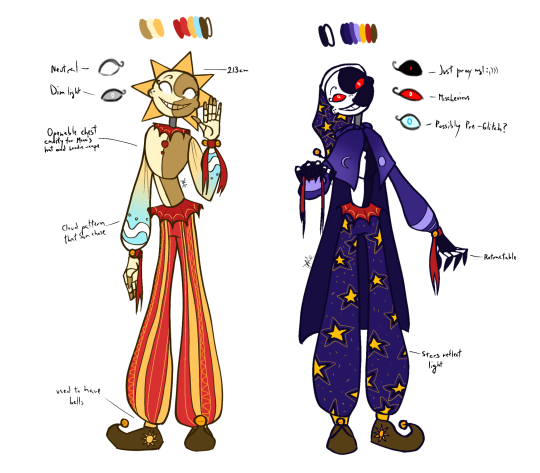
They can now emote a little bit more with their faceplate: Eyes are fully articulated with eyelids, the swirl that acts as their eyebrow is fully mobile, outer mouth plates are switched for a silicone layer and underneath, for stability, is an aluminum alloy that allows for a little bit extra movement. They are still stuck smiling unfortunately, but they can control how wide or crooked it is most of the time.
Hardware:
Their back wiring is now covered by a small metalic box that's waterproof. They needed that long ago anyway. They have "retractable claws" that are there more for show than anything else. Yes, they are kind of sharp but they can't exactly rip flesh off of bones. They were installed more or less to make moon look intimidating in case he comes upon an intruder on his patrols or while nap time. (Like it matters anyway, they are literally animatronics. Made out of metal.)
They can make a few soundboard effects from their voicebox. Why? They are jesters and they are caretakers. Entertainment honey.
They are directly connected to the internet as long as a wifi router is nearby. Also they can connect to bluetooth devices. The backup memory and RAM memory in their AI was upgraded aswell because let's be honest, how could they save all those guest profiles, children's preferences, allergies, special needs, intruder profiles etc.? deleting old information because "they are just some old files that we don't need anymore!" Is not the best way to approach it.
Software:
Unique features:
Sun: His rays can tilt 90° on each axis, they can retract but they cannot spin unfortunately (honestly it would be kind of hard to make it possible considering the amount of wiring inside his flat faceplate). He has pupils, they are just not visible in a brightly lit room, wich is ironic in a way or another, but that can be used to his advantage oftentimes.
The small embroidery on his pants was a last second detail he wanted to be added just on his design, the technician didn't ask why and he still won't dare to ask.
Moon: His hat and pants are made from the same material. The cape acts as a back-up blanket: it preserves heat and also can be cooled down easily. It was originally intended for aesthetic purposes only but after a little session of fuck around and find out the technician figured that the cape can fit 2-3 toddlers underneath.
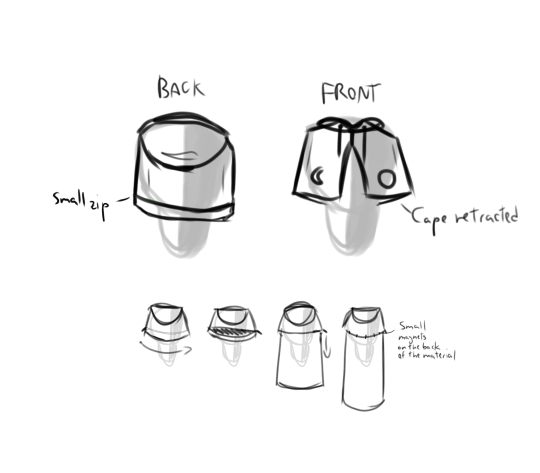
The cape and hoodie parts have little magnets on the inside part of the textile, (they were supposed to be pins but because of another "accident" that idea was scratched) wich hold the two pieces together neatly and secure.
Now you may wonder: "Well then, how can Moon use his wire if that cape is in the way?" Good question! I literally have no idea, but he does it somehow.
That is all for this post, for now at least. If you have more questions feel free to leave me an ask! Also I will update this post once I make more references and sketches :)
#fnaf daycare attendant#sun fnaf#fnaf moon#daycare attendant fnaf#fnaf au#dca au#mentally eclipsed au
38 notes
·
View notes
Text
acrylic fiber and polyester my beloathed.... when are we gonna start seeing bans on plastic in clothes? I can't stand them. like ok maybe for waterproof clothes plastic is necessary, but T-shirts and sweaters do NOT need plastic when we have cotton, bamboo, wool, linen, even viscose. and so much more sustainable textile material
#acrylic#polyester#plastic#plastics aren't breathable for my picky body so I'm instantly sweaty and gross when in an acrylic-wool sweater#also they're the absolute worst material for socks. for the same reason#and yet they're everywhere and unavaidable!!#sustainability#flickerthings
18 notes
·
View notes
Photo
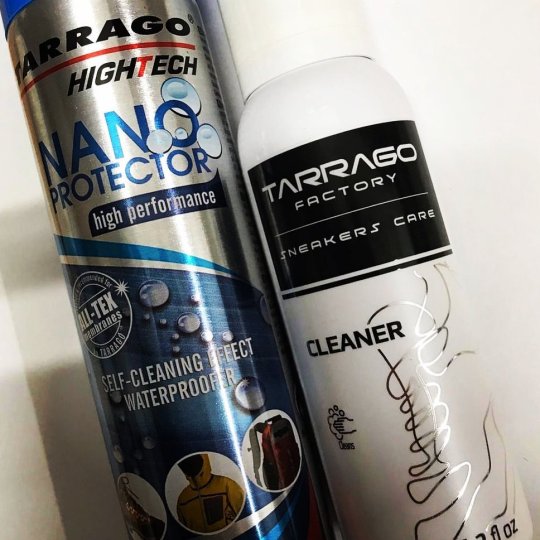
TARRAGO i dbaj o swoje Kicksy 👟👟 @nanoprotektor #multirenowacja #customizacja #tarrago #sneakers #cleaner #leather #suede #nubuck #textil #membran #nano #protector #waterproof #shoes #zapatos #multirenowacjapl #buty #obuwie https://www.instagram.com/p/CnoK2yGsNpA/?igshid=NGJjMDIxMWI=
#multirenowacja#customizacja#tarrago#sneakers#cleaner#leather#suede#nubuck#textil#membran#nano#protector#waterproof#shoes#zapatos#multirenowacjapl#buty#obuwie
0 notes